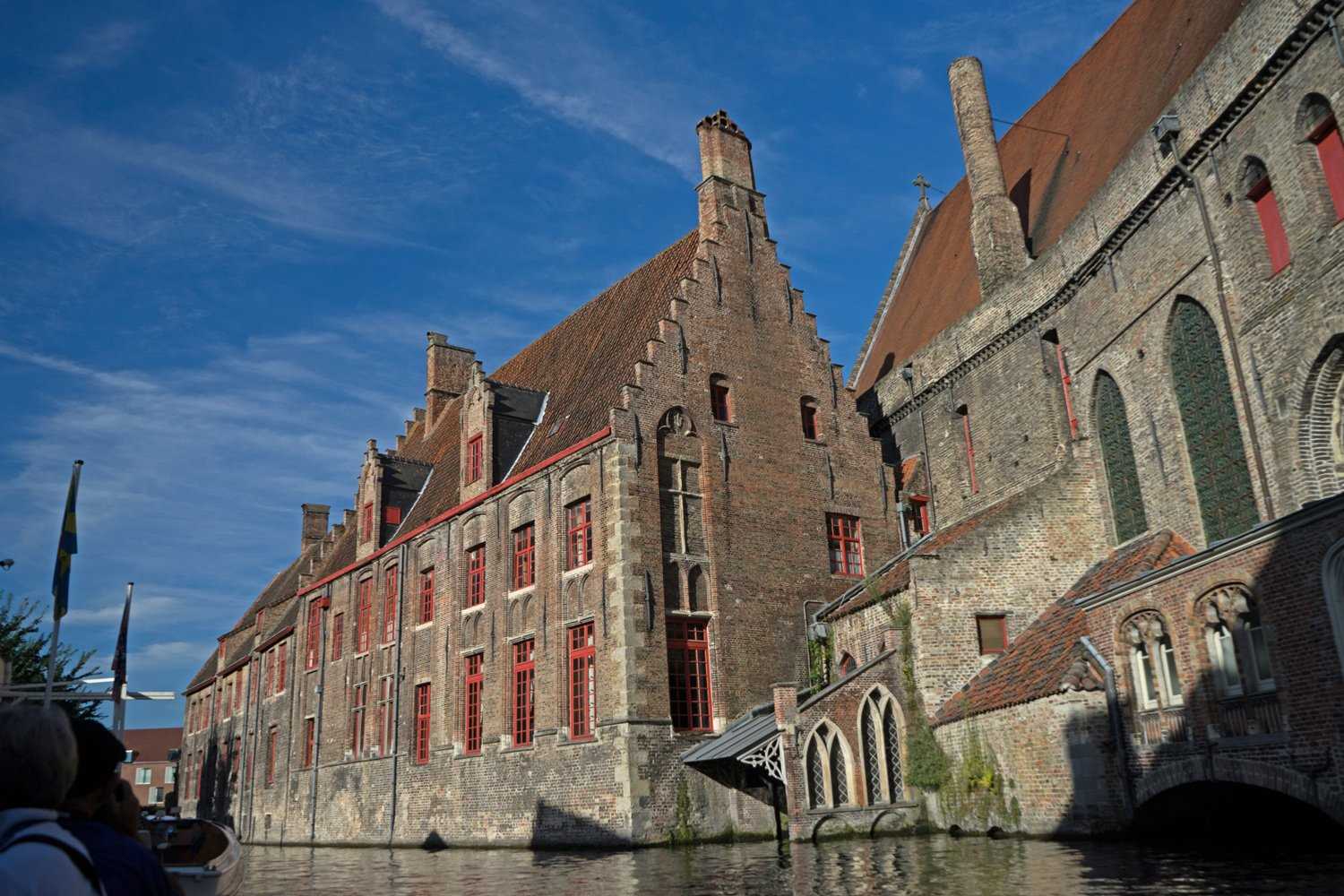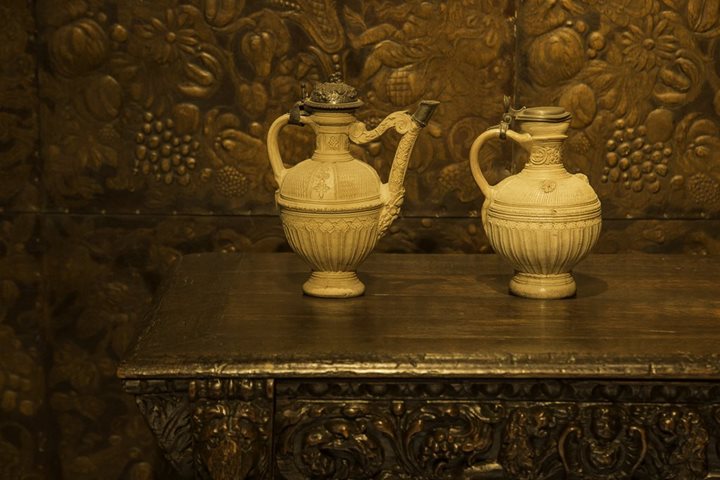Our streak of good weather continued into this morning as we disembarked at the port of Ostende under blue skies. From here it was a short half hour ride through the Belgian countryside to the city of Brugge (or Bruges, to use its French name). Considered something of a fairytale town with its canals, bridges, cobbled streets and churches, Bruges made its name as a merchant town and became extremely wealthy in the latter stages of the mediaeval period. We began with a walking tour following our arrival, beginning at the outskirts of the city and gradually making our way in through the beguinage, passing a large group of the town’s iconic swans. Once we made it to the town centre we boarded canal boats, the only vessels legally allowed to travel on its narrow canal system. From here we saw the city from a perspective not typically afforded to guests who remain on the streets, with many striking old buildings rising straight up from the waters. Balconies and various protruding structures overhang the canals, creating something of a cozy feeling in its crowdedness. After disembarking we continued to the town’s famous market square and went from there to lunch in 't Zwart Huis (The Black House). We had a typically Belgian meal of shellfish bisque and traditional Flanders stew. After this the group split. A number went cycling out in the local countryside while others enjoyed a chocolate making workshop. Others still opted to explore the alcoves, nooks and crannies of the city on their own. A sunny day in this iconic European city marked a perfect end to our exploration of Europe’s low countries before continuing on to our final destination of London, England.
9/9/2016
Read
National Geographic Orion
Antwerp and Brussels, Belgium
Ever since passing through the Kiel Canal on Monday, we have been travelling through the region of Europe known as the Low Countries. Today this usually refers to the modern states of Belgium, Luxembourg and the Netherlands (the Benelux countries), but the term has been in use for many centuries, long before these nations were named and their borders defined (of course the old name persists in the Netherlands, which means, literally, lowlands). In modern world affairs these are small nations, generally peripheral to the greater scope of geopolitics, but in the past the Low Countries were an important center of great art, a sponsor of many early voyages of exploration, the hub of the world’s first great financial network and a pivotal point in the great political and religious wars that swept across the continent for five centuries. Even today, in the busy cities and quiet towns we explored, in the monumental churches and world-class museums we visited and in the gracious people we met, there remain echoes of these generations of war and economic empire, fascinating traces of a terrible, glorious past. Through the morning we cruised the narrow channels between the low islands of Zeeland, still within the borders of the Netherlands, until we reached the busy canal that led us into the heart of Antwerp. From our berth, many of us simply strolled across the street for a walking tour of the old city center, including stops in the magnificent Cathedral of Our Lady and the Rubenshuis – the former home of the great painter Peter Paul Rubens. Our guides entertained us with many delightful stories of hidden details in both buildings and in the later afternoon we had the opportunity to entertain ourselves with further explorations, a noble undertaking that usually led directly to the nearest chocolate boutique! While we enjoyed Antwerp, some of our shipmates rode coaches to Brussels where the highlight was a visit to the Grand Palace and the Great Market square, gorgeous buildings which are the very distillation of Belgium’s rich history as the ‘Battleground of Europe’ and a dominant force in the global economy. The day was warm and sunny, but all of us could sense the stormy storm clouds of this small nation’s past, not far over the horizon.






